Physics IGCSE - Electromagnetic Effect
1/42
There's no tags or description
Looks like no tags are added yet.
Name | Mastery | Learn | Test | Matching | Spaced |
|---|
No study sessions yet.
43 Terms
Positive and negative charges in electrical charge
Charge
Property of matter → charged object experiences a force from another charged object or in an electric field
UOM: columbs
positive charges repel other positive charges
negative charges repel other negative charges
positive charges attract negative charges → electrostatic attraction

Electric field
a region in which an electric charge experiences a force
direction of an electric field at a point is → direction of force on a positive charge at that point
electrostatic charging by friction
friction between two insulators being rubbed against each other.
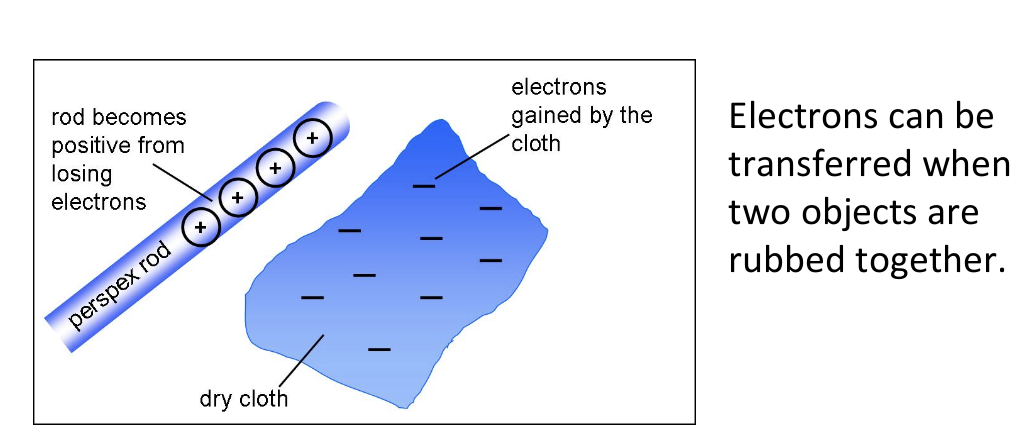
How to check for static electricity
attracts small paper pieces
causes an electroscope's metal leaf to rise
charging of solids by friction involves only a transfer of (electrons)
Conductor
an object that has free electrons → conduct an electric current
Conductor examples
copper
aluminium
Insulator
does not have free electrons and therefore does not conduct electric current
Insulator examples
plastic
rubber
Forces between magnetic poles
Like poles repel:
North (N) repels North
South (S) repels South
Unlike poles attract:
North (N) attracts South (S)
Forces between magnets and magnetic materials
Magnets can both attract + repel each other (depending on poles).
Magnetic materials → e.g. iron, nickel, cobalt are:
Attracted to both North + South poles
Never repelled
Magnetised material → acts like a magnet (has N and S poles)
Unmagnetised material → can be attracted to a magnet but has no poles
Magnetic field
a region in which a magnetic pole experiences a force
Direction of a magnetic field at a point → direction of force on N pole of a magnet at that point
Differences between properties of temporary magnets (made of soft iron) and the properties of permanent magnets (made of steel)
Temporary magnets | Permanent magnets |
|
|
induced magnetism
When a magnetic material becomes temporarily magnetised when placed near a magnet
Difference between magnetic and non-magnetic materials
Magnetic | Non - magnetic |
attracted to magnets → e.g. iron, steel, nickel, cobalt | not attracted to magnets → e.g. plastic, wood, copper, aluminium |
how permanent magnet differs from an electromagnet
Permanent magnet | Electromagnet |
|
|
Conductor moving across a magnetic field or a changing magnetic field linking with a conductor → induce an e.m.f. across conductor
Factors affecting magnitude of an induced e.m.f.
Speed of movement → faster motion of magnet or coil → increases e.m.f.
Strength of the magnetic field → stronger magnetic field → larger e.m.f.
Number of turns in the coil → more turns → greater induced e.m.f.
Angle of movement → maximum e.m.f. is induced when the motion is at right angles to the magnetic field lines.
Describe a a.c. generator (rotating coil)
A coil of wire is rotated in a magnetic field
As the coil turns → cuts through magnetic field lines → alternating current (a.c.) in the coil
Direction of current changes every half turn → a.c.
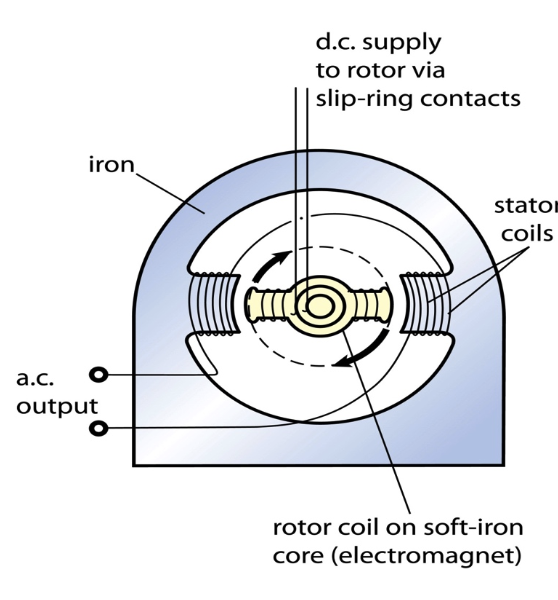
Describe use of slip rings and brushes where needed
Slip rings are connected to the rotating coil + rotate with it
Brushes are fixed + press against slip rings
Allows current to be transferred to an external circuit without twisting the wires
Use of slip rings ensures that the output is smooth a.c. → instead of flipping direction suddenly
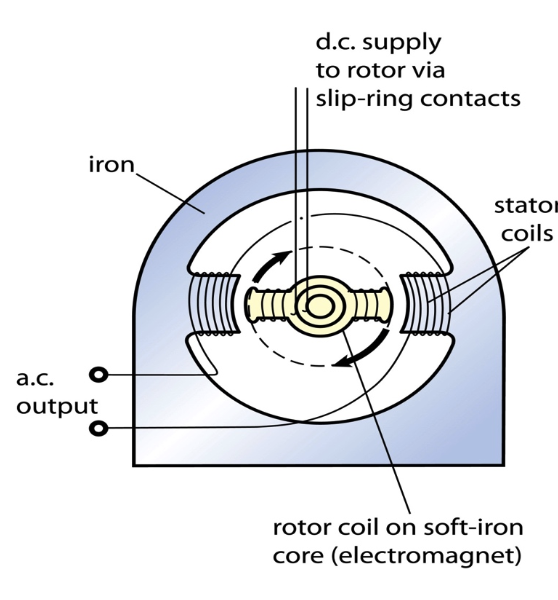
graphs of e.m.f. against time for simple a.c. generators
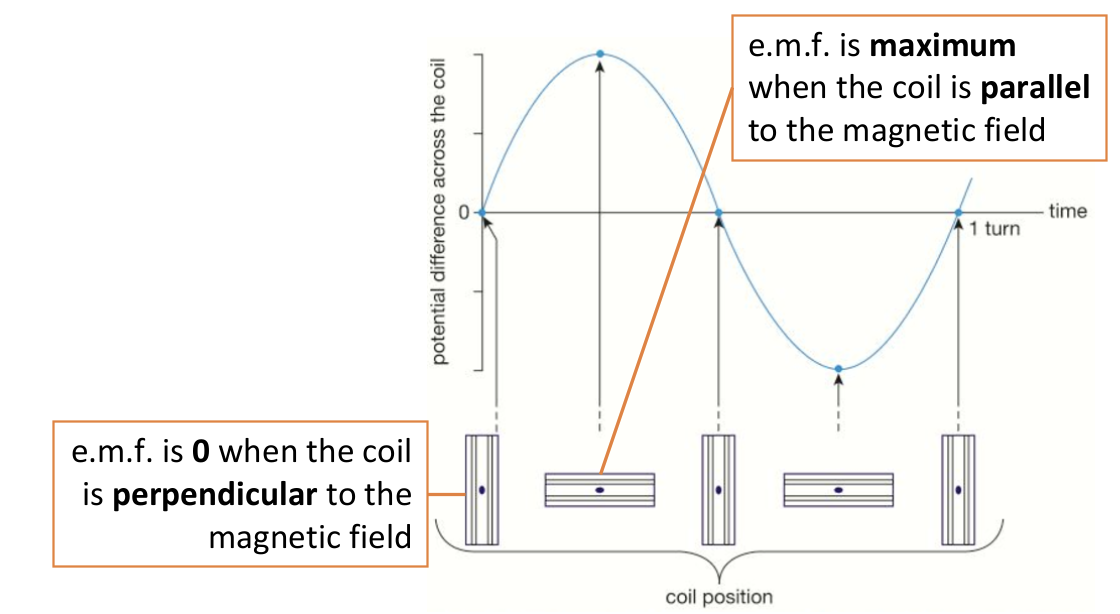
Solenoid
a coil of wire
Pattern + direction of the magnetic field due to currents in straight wires and in solenoids
For a straight wire:
Thumb points in the direction of the current
Fingers curl in the direction of the magnetic field lines (concentric circles)
For a solenoid (coil):
Fingers curl in the direction of the current around the coils
Thumb points in the direction of the magnetic field (towards the north pole of the solenoid)
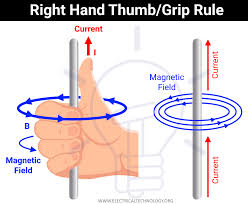
Effect on magnetic field around straight wires and solenoids of changing the magnitude and direction of the current
Around a Straight Wire
Increase current → magnetic field becomes stronger (field lines are closer together)
Reverse current → magnetic field direction reverses (use right-hand thumb rule)
In a Solenoid
Increase current → stronger magnetic field inside and around the solenoid
Reverse current → magnetic field direction reverses (north and south poles switch)
Force acts on a current-carrying conductor in a magnetic field
effect of reversing:
current
direction of the field
Left hand rule
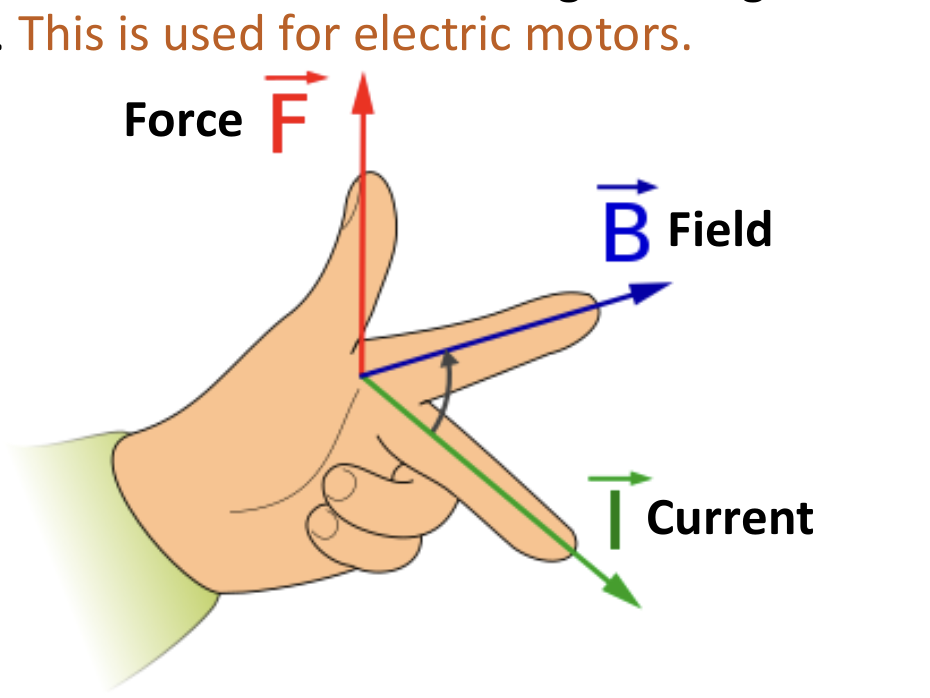
Right hand rule
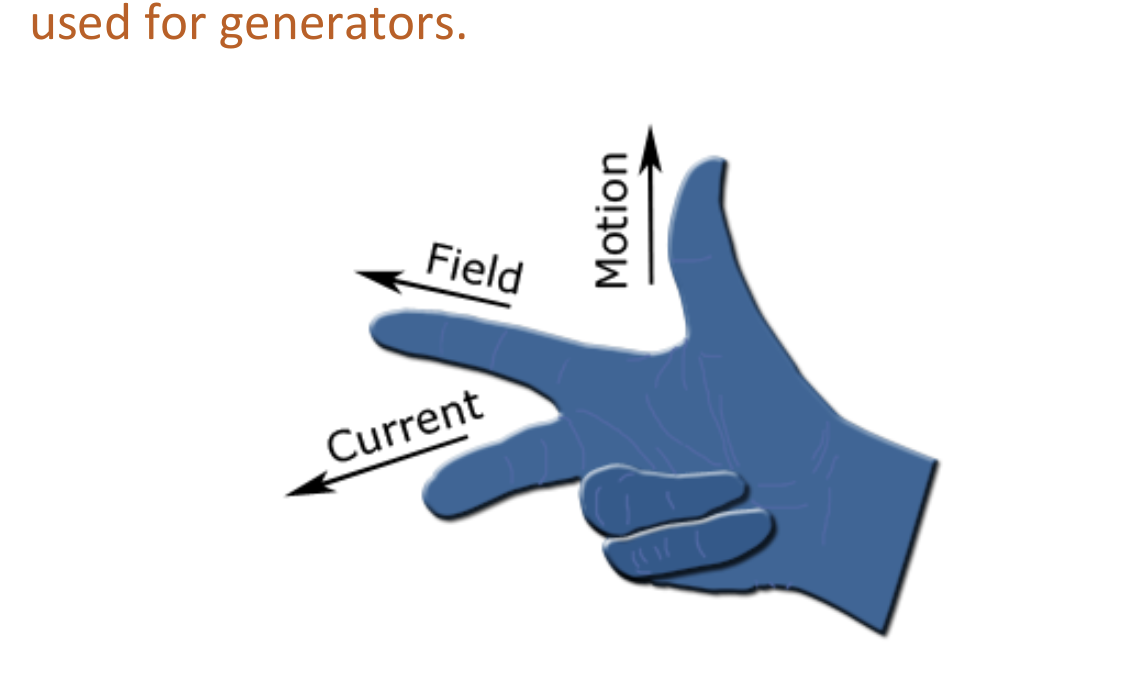
Current-carrying coil in a magnetic field may experience a turning effect
Effect is increased by increasing:
number of turns on the coil
current
strength of the magnetic field
d.c. motor
electrical device formed of a coil in a magnetic field. When a d.c. current is passed through it, the coil rotates
Operation of an electric motor
coil of wire placed in magnetic field → connected to a direct current (DC) supply
When current flows through coil → force acts on both sides of coil (using Fleming’s Left-Hand Rule)
forces are in opposite directions → causes coil to rotate
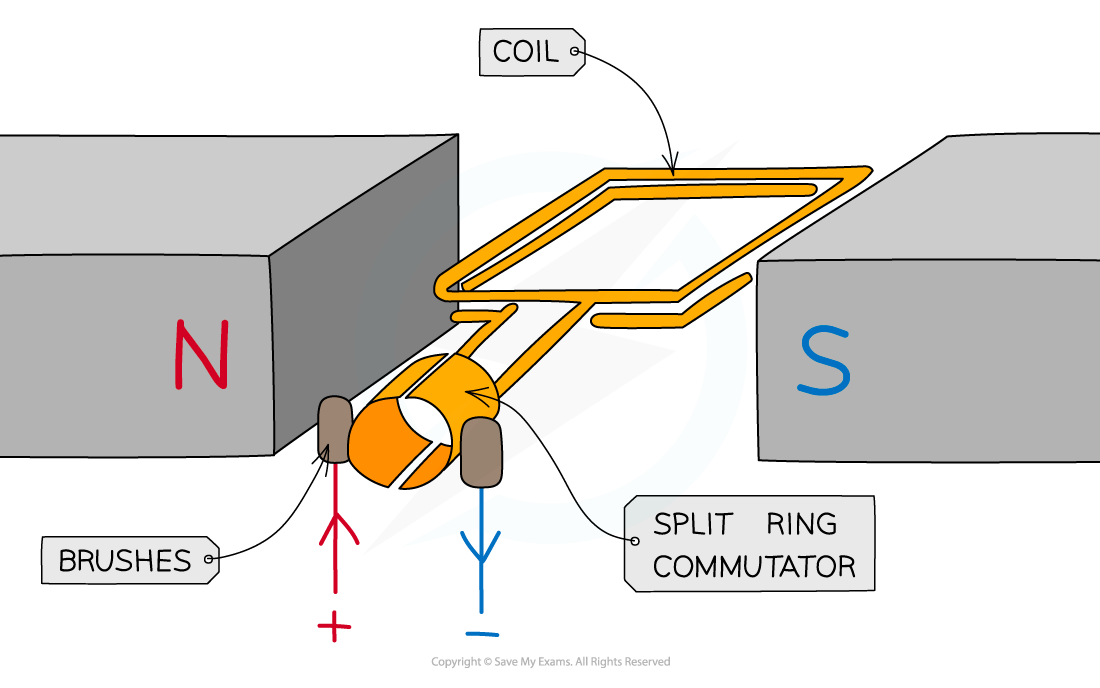
Action of a split-ring commutator
Role of Split-Ring Commutator
Reverses direction of current every half turn
Keeps coil rotating in same direction
Ensures continuous spinning motion
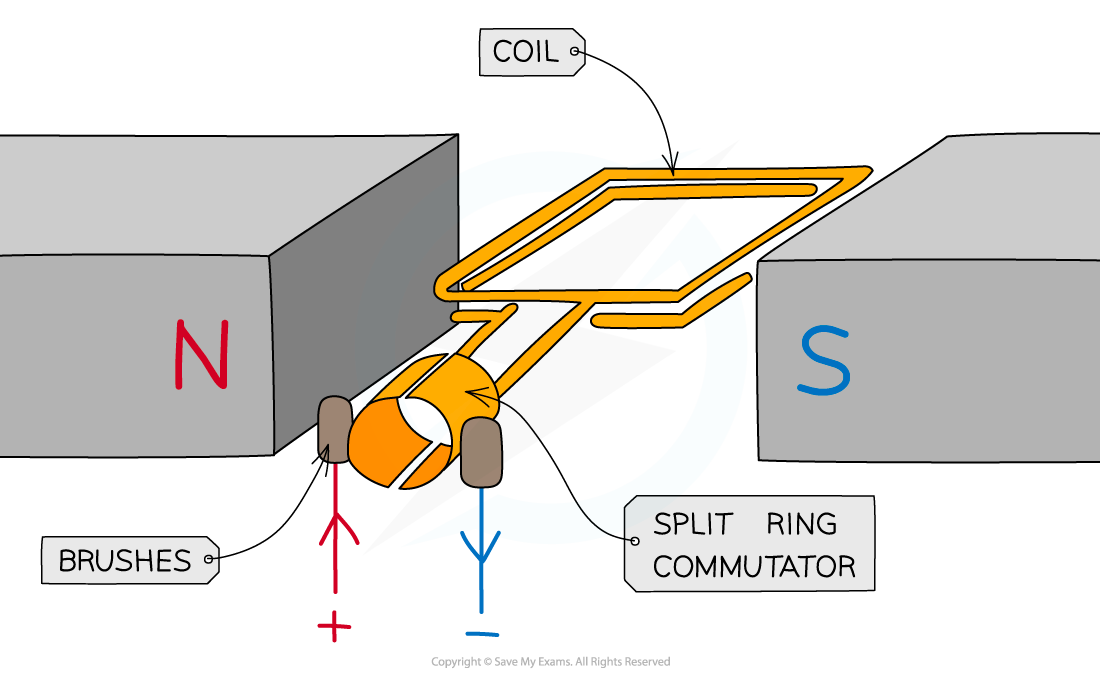
Action of brushes
Role of Brushes
Maintain electrical contact between rotating split ring + external circuit
Allow current to flow into spinning coil without twisting the wires
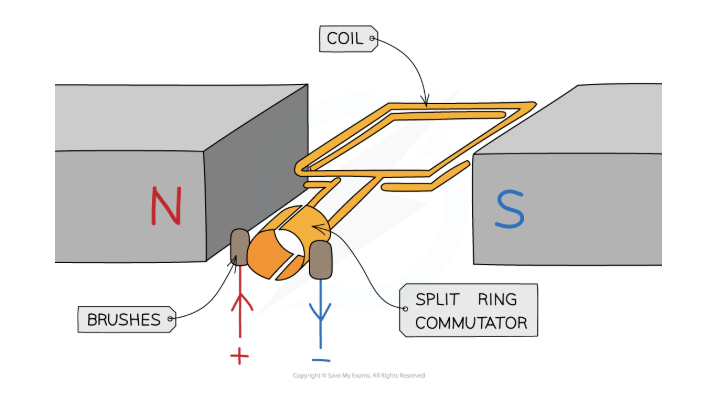
Transformer
A soft iron core → easily magnetised/demagnetised
Two coils: primary + secondary
Works via electromagnetic induction
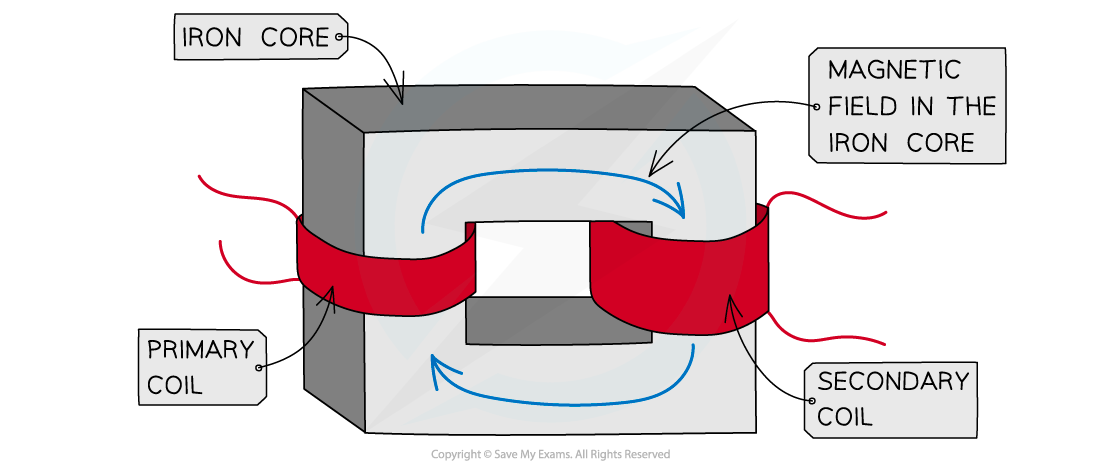
Step - up transformer
more turns on the secondary coil → increases voltage
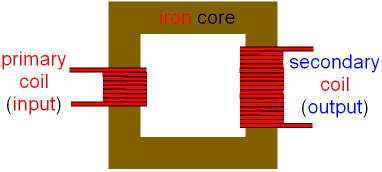
Step - down transformer
Fewer turns on the secondary coil → decreases voltage
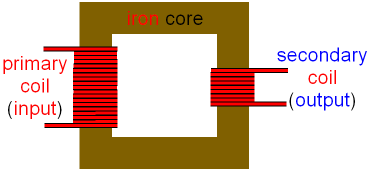
Transformer equation

Transformer efficiency equation
This assumes 100% efficiency → no energy lost

Use of transformers in electricity transmission
Transformers reduce loss in cables
Step - up transformers → increase voltage → decrease current
Step down transformers → reduce voltage
Power loss equation
Power loss increases with current
Increasing voltage reduces current → smaller losses
High voltage → used for long distance transmissions
